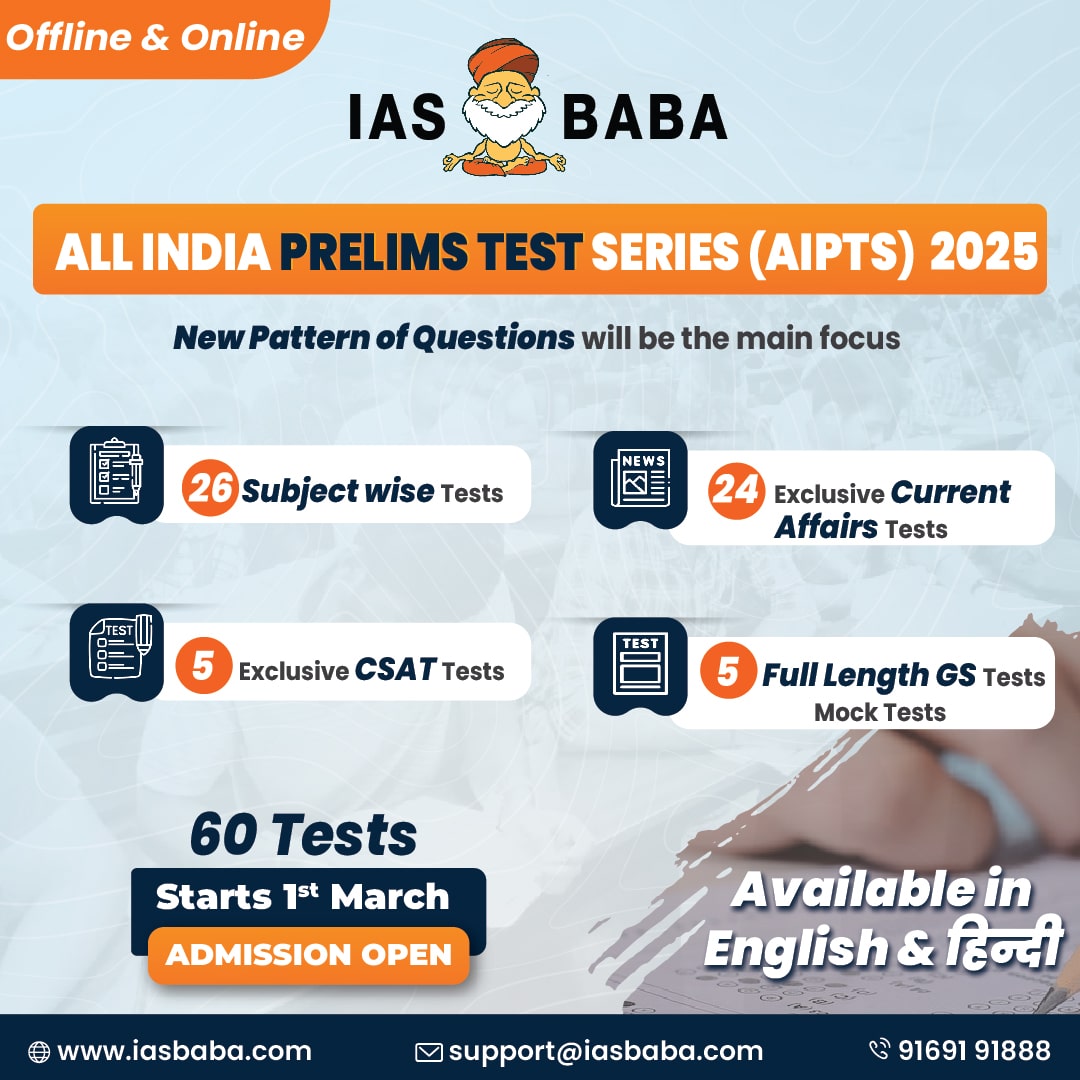Think and Learn-2015, TLP Mains 2015, UPSC, UPSC Mains- Think and Learn-2015
TLP: GS Mains Synopsis [Day 45]
Q.1) What is commodities exchange? What are the mechanisms in India to regulate commodities exchange? Discuss its importance with regard to agriculture sector.
The Top Answer for this Question is written by – FatMan
Ans) Commodities exchange is exchange where various commodities like wheat, rice etc and their derivatives are traded. e.g Multi Commodity Exchange (MCX), National Commodity and Derivatives Exchange (NCDEX), National Multi Commodity Exchange (NMCE), Indian Commodity Exchange (ICEX), Ace Derivative Exchange (ACE) and Universal Derivative Exchange (UCX).
* Mechanisms to regulate commodities exchange
- Commodities exchange in India are regulated by Forward Market Commission (FMC), now merged with SEBI, under (i) Forwards Contract (Regulation) Act 1952 and (iI) Forwards Contract (Regulation) Rules 1954.
- Through government notifications commodities which can be traded and which are not allowed are intimated time to time.
*Importance with respect to agriculture
- Provides transparent price discovery mechanism. Farmers can plan their cropping pattern for profit maximization.
- Security of income. Farmers can enter into futures contract for assured price for their produce.
- Farmers can store their produce in exchange designated warehouse till they fetch adequate amount for their produce.
- Improves bargaing power of farmers. As transparent exchange price of commodities are available.
Q.2) According to National Sample Survey Organization, 33 % of all farm households have less than 0.4 hectares of land. Also majority of farmers in India are small and marginal farmers. Critically analyze the initiatives taken by government to address concerns of farmers. Also suggest some measures in this regard.
The Top Answer for this Question is written by – Annapurna Garg
Ans) Land fragmentation is one of the major problems of Indian agriculture. It underlies several other ailments of this sector, like low productivity, and low mechanisation etc.
Government since independence has taken several measures to benefit farmers:
- Just after independence, cooperativization was attempted to address the issue of small landholdings. But it failed badly.
- Various subsidies are provided to the farmers-
- fertiliser subsidy has helped farmer to reduce input costs. But after the decontrol except urea, it has led to skewed nutrient levels in soil.
- electricity subsidy has led to power wastage and lowered water levels.
- MSP has worked well mostly for rice and wheat farmers at the expense of others.
- interest subvention on loans and loan waivers provides much relief to farmers. But it causes the banks reluctant to lend to farmers.
- Infrastructural improvements like irrigation through schemes like Accelerated irrigation benefits program have increased the area under irrigation but only partly.
- APMC was intended to benefit farmer, but it has proved opposite. Recent national agri market is the hope.
- Kisan call centre has helped improve farmer knowledge but it needs more manpower to facilitate more farmers. Similarly Kisan tv is a recent announcement.
Followng steps can be further taken:
- Insurance needs revamping.
- Priority sector lending needs course correction by better monitoring.
- Dedicated people in the agriculture ministry who can provide a holistic picture of various issues.
- Contract farming laws need better regulation.
- Mechanisation on a collective scale can be initiated on a pilot basis.
Agruculture holds the key to national economic growth and thus should not be left ignored.
Q.3) India is largest producer of pulses in theworld. Still India imports large quantities of pulses. Critically examine the reasons for low productivity of pulses in India.
The Top Answer for this Question is written by – Monk Who Sold His Nano
Ans) India’s socio-cultural ( and now political) aversion to meat eating makes pulses the primary source of protein in the normal diet. With ever increasing middle class population, the demand for pulses has soared but supply hasn’t been able to keep up. That’s the reason why despite being the largest producer of pulses, and pulses being the natural fertilizers, India needs to import them to feed it’s people. The probable reasons for mismatch.
1) Due to hunger and famines of the 60s, green revolution targeted cereals productivity for sorting out the crisis. The hunger problem though resolved, practice still continues as seen through the MSP pricing mechanism.
2) Apart from distinctiveness of MSP and profits(not as productive as cereals, but more energy intensive) pulses are a dicey crops which attract pests and weed making farmers more averse to growing pulses
3) There’s not much research done on pulses to evolve HYV or GM pulses with higher productivity. Though now ICAR has taken up initiatives in t his field.
With increasing cases of protein energy malnutrition (and increasing militancy of beef ban activists), the government has undertaken initiatives to increase pulse production by increasing the MSPs, extending irrigation into pulse producing areas, and even encouraging pulse processing units. But, simultaneously alternative protein sources like eggs, milk, soybean, and meat should also be encouraged.
Q.4) Do you think river-linking projects could be one stop solution for irrigation woes of agriculture sector, especially when majority of Indian agriculture is rain fed? Substantiate.
The Top Answer for this Question is written by – Annapurna Garg
Ans) Indian agriculture is monsoon dependent to a significant extent as around 65% of area is rain fed. This reliance on rain is a very major factor which explains the plight of farmers. Hence, some steps need to be taken in this direction.
Inter linking of rivers could be a step in this regard. It would help to make water available in the water deficient areas and could thus avert the threat of droughts. However, it cannot be said to be one stop solution for irrigation woes. This is so because:
- Water availability would be of no use till proper infrastructure for irrigation is in place, like canals, wells, tanks, etc.
- Watershed development is a pre requisite. Integrated watershed development program should be further encouraged.
- Coordination between state and local governmnet is must to ensure proper planning and adequate finances.
- Small and marginal farmers should have surplus finance to invest in irrigation infrastructure at their farm levels.
- Education of farmers is crucial to ensure that crops are watered as per their need. This is especially true for HYV seeds.
Thus, inter river linking is definitely a positive step in this direction which needs proper harnessing to yield results.
Q.5) What are the different types of irrigation methods practiced in India? Evaluate each method on its merits and demerits.
The Top Answer for this Question is written by – Vidhu
Ans) Irrigation methods used in India are just as multi-dimensional as the country itself. The geographical, cultural diversity of the country brings about diversity in irrigation methods. The different types of irrigation methods are:
- Surface/Flood irrigation: In this type the field is flooded with water from canals, rivers, tanks, bore
wells. Practised in uneven topographic regions with low infiltration of water making it suitable for paddy cultivation.
Merits: it has low cost, low maintenance does not require levelling of land
Demerits: low water use efficiency due to wastage in seepages and evaporation , soil erosion and runoffs increase
2.Subsurface : involves direct application of water to the subsurface root level.
Merits: low water usage and wastage, soil nutrient levels preserved
Demerits: cost of installation and maintenance is high
3.Sprinkler irrigation: in this method water is sprayed on the crops by means of sprinklers at a controlled rate.
Merits: low wastage, high efficiency, can be used in water deficient regions, high output
Demerits: installation cost is high, require electricity for running sprinklers
4. drip irrigation: in this the water is provided directly to the roots drop by drop by pipes and drips.
Merits: high efficiency, can be used for variety of crops and fruits and vegetables, prevents water wastage and controls water usage, low labour needed, high output
Demerits: high installation cost, not much awareness among farmers
Land and soil mapping should be done in order to provide the most effective irrigation method to the farmers so as to increase the productivity and reduce wastage of nutrients and water.














